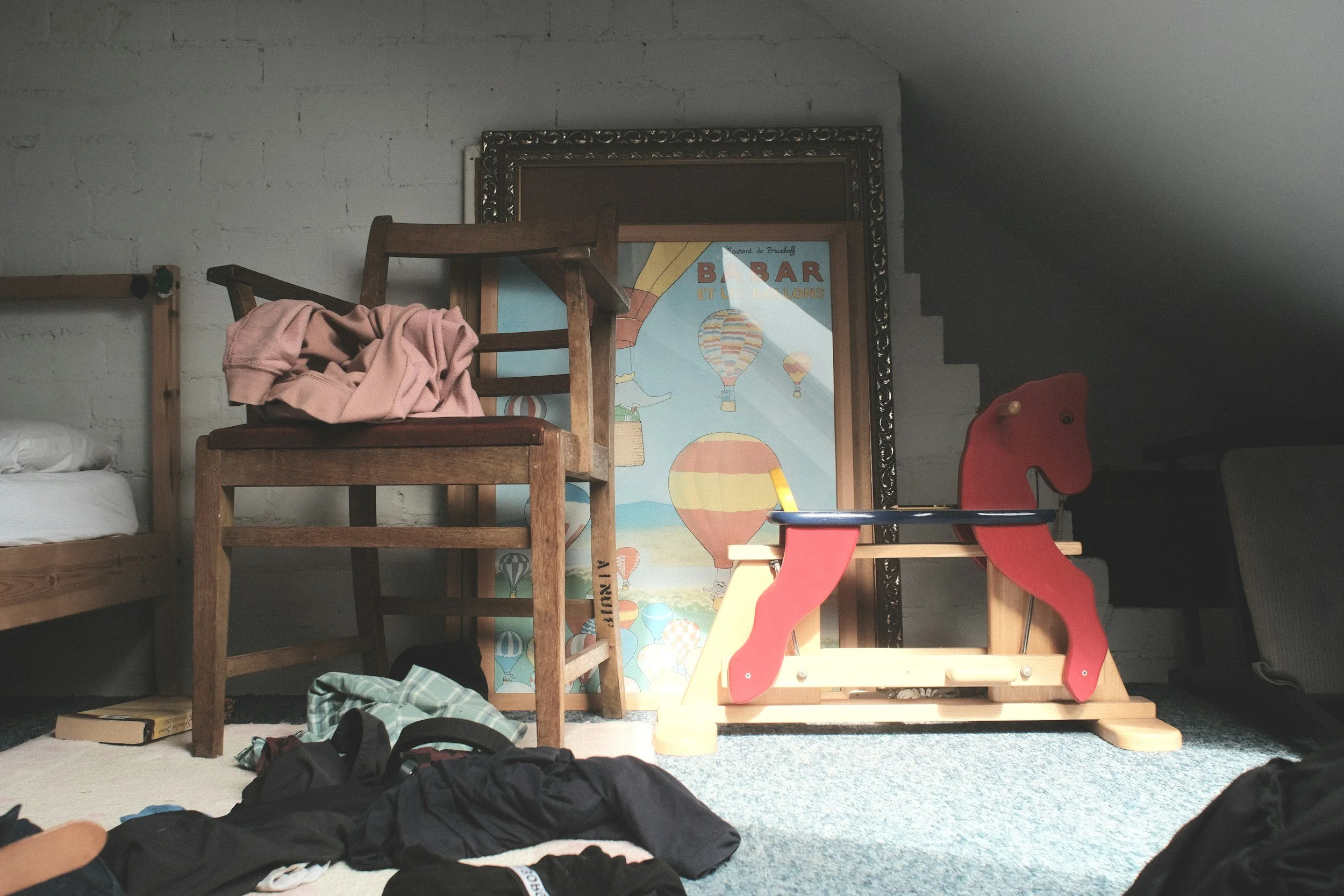How to Make Trash Cans and Hampers ADHD-Friendly
People with ADHD don’t struggle with putting trash in the trash can or clothes in the hamper because they don’t care—it’s often about barriers. Even small obstacles can cause friction, leading to distractions and forgotten tasks. The key is to make these habits easy, obvious, and rewarding so they require as little effort as possible.
Remove Barriers
My number one solution is to remove barriers. A barrier can be something small—so small that a neurotypical person might not even notice it. But for someone with ADHD, even an extra step (like lifting a lid or opening a closet door) can derail the moment and lead to distraction. When barriers are in the way, accusations of laziness, shame, and guilt often follow—but the problem isn’t motivation, it’s accessibility.
🚫 Hidden = Forgotten
Hampers and trash cans should be visible and accessible at all times.
Avoid placing them behind doors, inside cabinets, or anywhere that requires extra steps to use.
No lids, no foot pedals! Lifting a lid or pressing a pedal creates just enough friction to derail the habit. Open-top bins and baskets work best.
📍 Location Matters
Place trash cans where trash happens (e.g., bathroom, bedside, desk, garage, car).
Keep hampers where clothes are removed or brought home (e.g., shower, walk-in closet, bedroom, garage, or even by the door).
Practical Solutions
When systems aren’t working, adding more tools, not removing them, can often be the fix. If trash cans and hampers are overflowing or unused, it may be because there aren’t enough of them in the right places.
🗑 More Trash Cans
Add small, open-top trash cans in every room—not just the kitchen.
Use larger cans in high-use areas like bathrooms and home offices.
No lids, no extra steps—just toss and go.
👕 More Hampers
Keep hampers out in the open near dressing areas, showers, and laundry zones.
A large basket on the floor is ideal in my experience.
Skip hampers with lids—make it as easy as possible.
📅 Scheduled Cleanouts
Empty hampers and trash cans on a schedule—not just when full. Scheduled chores prevent overflow and distractions (I should do the laundry now… what was I doing?)
Set a recurring reminder with a visual and audible alarm.
Handling Aesthetic Concerns
A common issue I see is when a client, housemate, or partner dislikes how trash cans or hampers look in a room. If you’re visually sensitive, having multiple open bins in your space may be frustrating. But when faced with the choice of clutter vs. extra trash cans, it helps to reframe the decision.
🛋 Worried About Too Many Bins?
1️⃣ Compromise: Extra bins look better than trash or clothes piling up.
2️⃣ Build the Habit First: Once it becomes automatic, you can gradually remove extras or add small barriers like lids.
3️⃣ Let Go of Perfectionism: It’s easier said than done, but worth mentioning so you’re aware that perfectionism may be a factor. It’s not going to be perfect on day 1, but it will be a step in the right direction. Remember, there is no such thing as perfection.
Celebrate Small Wins
ADHD brains run on dopamine, and even small rewards can make a big difference. The reward doesn’t have to be huge—it just needs to feel good in the moment. A simple dopamine boost reinforces the habit and makes it easier to repeat.
🎉 Try rewarding yourself (or others) with:
✅ A simple “thank you” or a self high-five (yes, really!).
🎶 A short song, a little dance, a stretch, or a deep breath.
🍫 A piece of chocolate, candy, or another small treat.
It may seem insignificant, but your brain registers it as a win, and that’s what builds habits over time.
A Note About Recycling
These principles apply to recycling too—recycling bins should be easy to access, visible, and have no extra steps like lids or hidden storage. But one of the biggest struggles I see with disorganized clients is cardboard. It piles up fast, takes up space, and feels overwhelming to manage.
I’ll be covering cardboard clutter in a future post, but for now, focus on building the habit of using the trash can first. Once that becomes second nature, we can layer in recycling separation without adding too much friction at once. Small steps lead to sustainable change!
Final Thoughts
ADHD-friendly organizing is about removing friction, making tasks obvious, and building sustainable habits. No lids, no foot pedals, no extra steps—just toss and go. Small changes can have a big impact—so set yourself up for success and celebrate every step forward!






